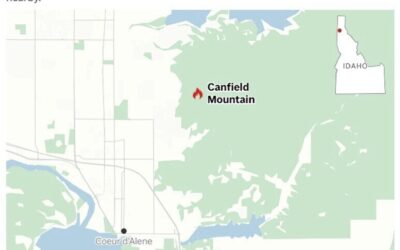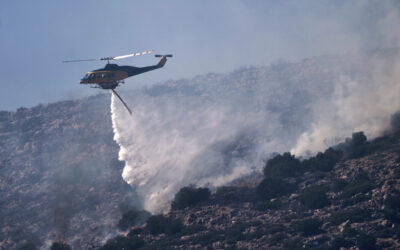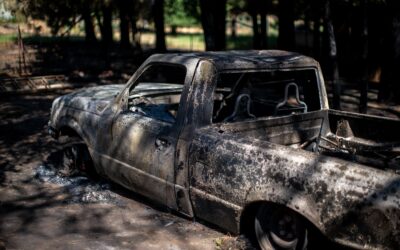Although safety is always a major concern in structural and wildland firefighting, the wildland community took a unique approach to the subject and started examining the human dimensions of wildland firefighting. The emphasis was on the people, not the fire—the role that human behavior plays in safety, including common risky behaviors. In its basic form, the study of human factors is the science behind people at work. For us, it is the understanding of human capabilities and the application of that information to the mission of the fire service. We need to approach our human factors from the risk management perspective and factor that data into our fireground operations.
Wildland firefighters also looked at these human factors as they relate to the individual, including situational awareness and making decisions in a rapidly changing, high-risk environment. They examined cultural attitudes from the standpoint of their being an improvement or impediment to firefighter safety. They recognized that issues such as communication, leadership, and group structure can be used to reduce stress and lessen the chance of tragic outcomes. This truly looked like the crossover of situational awareness and firefighter culture. These efforts have led to a list of human factors being included in the Incident Response Pocket Guide, published by the National Wildfire Coordinating Group (NWCG), as a reminder of what they are and how they apply to everyone on the fireground.
 (1) Human factors are a contributing cause in accidents, including a loss of situational awareness. Reduced situational awareness can lead to insufficient decision making and errors. (Photos by author.)
(1) Human factors are a contributing cause in accidents, including a loss of situational awareness. Reduced situational awareness can lead to insufficient decision making and errors. (Photos by author.) (2) Excessive radio traffic can create a distraction. Both wildland and structural firefighters should be trained in radio discipline and etiquette.
(2) Excessive radio traffic can create a distraction. Both wildland and structural firefighters should be trained in radio discipline and etiquette.Human Factor Barriers: Situational Awareness
Low Experience Level with Local Factors
- Unfamiliar with the area or the organizational structure.
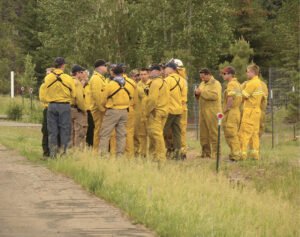 Chances are that factor is going to influence wildland firefighters who have been ordered to respond to fires outside of their jurisdictions. Structural firefighters can also be impacted by this factor in responding to mutual-aid requests. In a wildland urban interface (WUI) situation, the question of whether the incident is to be run by a local fire department or managed by a federal agency needs to be answered. A lack of familiarity with the area the fire is in and not knowing who is running the incident can present barriers to your situational awareness and incident safety. Meeting the players before an incident occurs can influence the level of success, the degree of safety, and the general outcome of the incident.
Chances are that factor is going to influence wildland firefighters who have been ordered to respond to fires outside of their jurisdictions. Structural firefighters can also be impacted by this factor in responding to mutual-aid requests. In a wildland urban interface (WUI) situation, the question of whether the incident is to be run by a local fire department or managed by a federal agency needs to be answered. A lack of familiarity with the area the fire is in and not knowing who is running the incident can present barriers to your situational awareness and incident safety. Meeting the players before an incident occurs can influence the level of success, the degree of safety, and the general outcome of the incident.
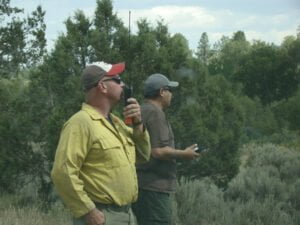 Distraction from Primary Task
Distraction from Primary Task
- Radio traffic.
- Conflicts.
- Previous errors.
- Collateral duties.
- Incident within an incident.
All these distractions have the potential of impacting both the structural and wildland firefighters operating at a WUI fire. The first step in overcoming these barriers is to ensure that you have the correct mindset. Are you going to be part of the solution or part of the problem? We know that better situational awareness creates better decision making. Situational awareness experts say that the loss of situational awareness leads to the majority of accidents not only in the fire service but in the American workforce at large. You need to control these distractions as best you can. Your attention can be drawn away from the task at hand by any one of these factors. Try to stay focused on the big picture.
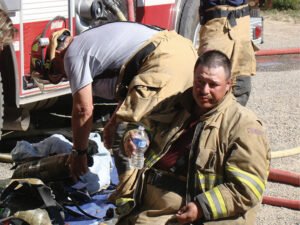 Fatigue
Fatigue
- Carbon monoxide.
- Dehydration.
- Heat stress.
- Poor fitness levels can reduce resistance to fatigue.
- 24 hours awake affects your decision-making capability like 0.10 blood alcohol content.
Most existing rehabilitation policies and procedures were developed for structural firefighting. Although a majority of fire departments have access to some type of rehabilitation, be it fluid and nutrition replacement, medical evaluation and monitoring, or cooling and rest/recovery periods, the wildland community may not have access to what structural firefighters take for granted. National Fire Protection Association (NFPA) 1584, Standard on the Rehabilitation Process for Members During Emergency Operations and Training Exercises, provides guidance on rehab practices applicable to both wildland and structural firefighters. The 2022 edition of the standard noted a section reserved for wildland incidents that will appear in future editions.
What guidance wildland firefighters are given on rehabilitation addresses work/rest periods and shift and assignment lengths. The extreme conditions causing fatigue in military service members in combat and combat training have been studied. One study found that the collective effects of severe exertion, limited caloric intake, and sleep deprivation combined with the inherent stressors of combat lead to both physiological and psychological fatigue that may significantly impair performance.

(3) Wildland and structural firefighters require rehydration and rest during emergency operations. NFPA 1584 can provide assistance on rehabilitation procedures.

(4) Improper personal protective equipment and an inadequate fire flow are two of the barriers that can impact crew safety. Complacency and feelings of invulnerability are also two hazardous attitudes that can have a negative impact on team cohesion and safety.
Stress Reactions
- Communication deteriorates or grows tense.
- Habitual or repetitive behavior.
- Target fixation—locking into a course of action; whether it makes sense or not, just try harder.
- Action tunneling—focusing on small tasks but ignoring the big picture.
- Escalation of commitment—accepting increased risk as completion of a task gets closer.
We all react to stress in some way, shape, or form. When stressed, our performance levels are going to be impacted, which may lead to some of the reactions listed above. When our sympathetic nervous system kicks in, we may not perform in the same way we do in less stressed situations. We have to be cognizant of the signs and symptoms of stress reactions and realize that some of these responses can be countered by training. Recognition primed decision making is an example of how people make rapid and effective decisions when faced with high-stress situations. Essentially, it is the ability to quickly determine what the problem is, find a solution to that problem, and apply that solution based on previous experiences. Studies have shown that firefighters’ decision-making processes can be improved within a simulation-based training environment. Applying that knowledge gained through simulated training to an uncontrolled environment works. Simulation-based training programs can reduce some of the stressors that wildland and structural firefighters face when operating in the WUI.

(5) Error reduction requires a commitment to change the fire service culture. Wildland and structural firefighters need to be trained in recognizing the human factors that cause errors and how to plan for preventing them.
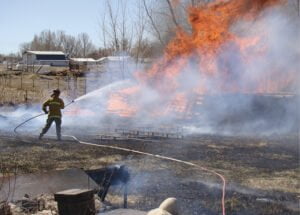 Hazardous Attitudes
Hazardous Attitudes
- Invulnerable—that can’t happen to us.
- Antiauthority—disregard of the team effort and command orders.
- Impulsive—do something even if it’s wrong.
- Macho—trying to impress or prove something.
- Complacent—just another routine fire.
- Resigned—we can’t make a difference.
- Group think—afraid to speak up or disagree.
Hazardous attitudes have the most potential of damaging what needs to be a team environment. Team-building skills can reduce some of the bad attitudes that can plague both wildland and structural firefighters. It has been noted that effective team building creates a synergistic effect, in which the whole becomes greater than the sum of its parts. The effective team-building process needs to include the exchange of ideas and the voicing of different viewpoints without repercussions. Communication skills and creating a team that is accountable and members who are committed to what is best for the team and not the individual are crucial in addressing hazardous attitudes.
. . .
The NWCG course “Human Factors in the Wildland Fire Service (L-180),” presented online through the National Fire Academy, provides conceptual tools that can be used in addressing human factors on the fireground. These tools include communication techniques, situation awareness self-check, the risk management process, and teamwork guidelines. Most wildland and structural firefighters have not been taught human factor concepts through their basic firefighter training. All aspects of the jobs that wildland and structural firefighters perform involve human factors.
Are we taking error reduction seriously? We know that faults occur in any human undertaking. I would propose that most fireground accidents and line-of-duty deaths in both structural and wildland fires are rooted in some type of human factor.
For many years, the culture of firefighting has focused on counseling or disciplining when mistakes are made. A change is on the horizon in teaching firefighters what they need to anticipate the errors that will occur and to think about what steps can be taken to plan for when things go wrong. Good situational awareness needs to include recognizing the barriers that our human factors create and how those obstacles impact our performance in the high-risk work environment.
REFERENCES
Gillespie, S. (2013). Fireground decision making: transferring virtual knowledge to the physical environment. Ann Arbor, MI. Pro-Quest, LLC.
Moore-Merrill, L., et al. (2008). Contributing factors to firefighter line-of-duty injury in metropolitan fire departments in the United States. Washington, DC. International Association of Fire Fighters.
National Wildfire Coordinating Group (NWCG). (2008) Human factors in the wildland fire service L-180. Boise, ID. NWCG.
National Wildfire Coordinating Group (NWCG). (2022). Incident response pocket guide. Boise, ID. NWCG.
Tippett, J. (2014). Understanding human factors on the fireground. Retrieved March 30, 2022, from https://www.firefighternation.com/firerescue/understanding-human-factors-on-the-fireground/#gref.
United States Forest Service. (2002). Wildland firefighter health and safety report. Washington, DC. United States Department of Agriculture.
Weeks, S., et al. (2010). Physiological and psychological fatigue in extreme conditions: the military example. Retrieved March 30, 2022, from http://pubmed.ncbi.nlm.nih.gov/20656625/#affilation-1.
Werner, D. (2013). Stress inculcation in firefighter training. Retrieved March 30, 2022, from https://www.fireengineering.com/firefighting/stress-inclcation-in-firefighter-training/#gref.
THOMAS W. AURNHAMMER is a 46-year fire service veteran, is a fifth-generation firefighter, and has served as the chief of departments in New Mexico and Colorado. He is a regional captain with the San Juan County (NM) Fire Department. He is a graduate of the National Fire Academy’s Executive Fire Officer Program and has a bachelor of science degree in fire administration. Aurnhammer also has the Chief Fire Officer designation and is a member of the Institution of Fire Engineers, U.S. Branch.

